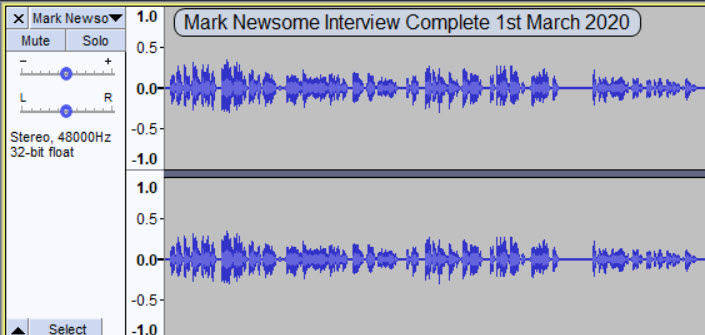
Hello, and welcome to the first lesson in my free Audacity training series.
Audacity is an incredibly powerful, and free piece of software, capable of recording, editing, and mastering all sorts of different types of audio. Although I must admit that the interface does look a little bit dated and hasn’t really been updated a whole lot since Audacity came out in May of 2000, this free piece of software still holds up surprisingly well.
In fact, many people don’t know this, but Audacity is still in development, with version 3.0 coming out just a month before I began publishing this course. I think that’s pretty neat considering Audacity is completely free. The team relies almost entirely on donations, sponsorships, and volunteers.
Anyway, you may hear Audacity referred to as something called a digital audio workstation, D-A-W, or DAW. DAWs are pieces of software designed for the purpose of working with audio on a deep or even professional level. Technically, although it is quite basic as far as DAWs go, Audacity fits the bill.
Before I talk about where Audacity falls a bit short, let me first cover some potential use cases for Audacity, and why you might want to consider using it for your next project.
First of all, Audacity is wonderful for content creators. If you’re recording or editing recorded dialog, Audacity already has all the tools built-in that you might need or want in order to do this without problems. For example, if you’re going to be recording podcasts, even with multiple people, Audacity can handle this perfectly. If you’re going to be working with video, no problem. As a matter of fact for years my entire process for creating my courses had me editing the video in a video editor, exporting the audio, editing it in Audacity, then putting it back into the video editor. This was for professional business courses that I sold, and the audio was perfectly fine.
Many famous YouTubers record directly into Audacity due to its simplicity, even if they have more expensive or complex software available to them. I still use it to this day if I need to quickly record something, it’s pretty great.
If for whatever reason you want to extend Audacity’s functionality, Audacity also supports the use of third-party plugins, which I will cover in more detail in a later lecture. This means that you aren’t stuck with just the tools that come built-in to Audacity already.
Let’s talk about music. Audacity for music is a bit hit-or-miss. It does support all of the basic things you would need, particularly with the use of third-party plugins. You can record and mix multiple instruments without problems. However, it is a little bit clunky to use in comparison with other DAWs, and in all honesty I would suggest that you go with a problem like Reaper instead, which runs for about $60.
There are also areas where Audacity falls short in terms of music production, such as with the use of MIDI (such as for working with midi controllers and virtual instruments) and the more complex areas of composing, mixing and mastering.
That being said, many of the skills and concepts taught within this training series will translate to other DAWs later, so you’re still welcome to listen through if you’d like.
Anyhow, before we begin, I want to discuss briefly how to use this training series. This training series doesn’t require you to go through it linearly, and can be freely jumped around as you come across questions while using Audacity. I wanted to design it so anybody can jump in, learn what they need, and get out. That being said, you’ll learn the most by going through each lecture. And because Audacity is still in development, and I still get new questions all the time, I may add new tutorials from time to time. Therefore, I encourage you to subscribe, and check out all of the other Audacity tutorials I have published as well.
If you have any questions throughout this training series, please leave a comment and let me know. I will try to get back to all of them as quickly as possible, and if there are a lot of questions about something I will write an additional article to address it.
Thank you, and I hope you enjoy!

I used to utilize this tool a lot back when computer is the most important tool for editing. 🙂
Tekkaus(Quote)
Audacity is pretty powerful for free software! I’m going to be uploading a lot of tutorials on it in the near future.
James McAllister(Quote)